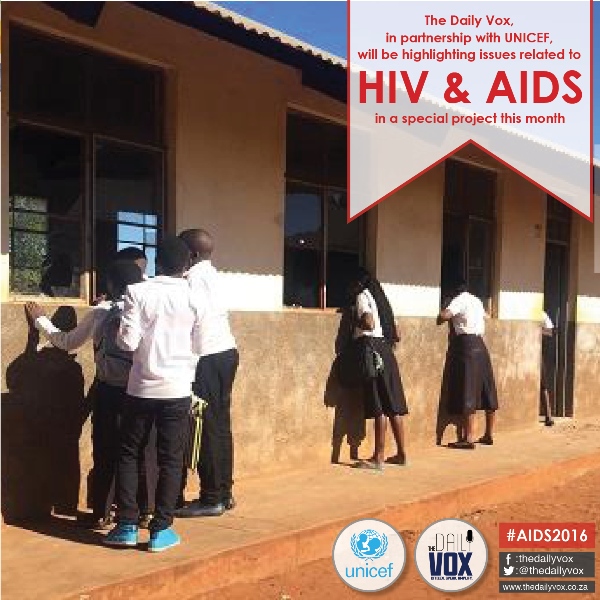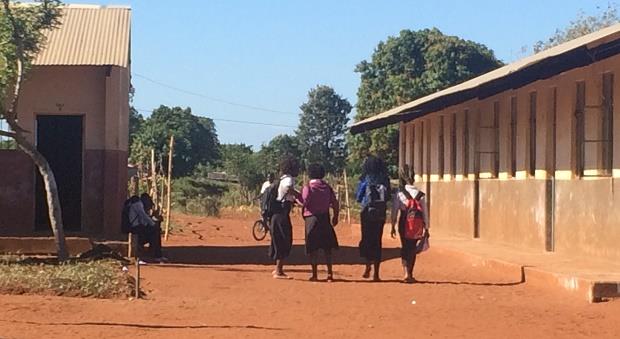The number of adolescent deaths related to AIDS has tripled since 2000, with the majority of these cases reported in sub-Saharan Africa. And it is in places like Mozambique where chronic underdevelopment further challenges the public health system.
In Chibuto, Mozambique, the streets are lined with women running small businesses and buzzing with 14-seater taxis and the back of bakkies loaded with people moving from one district to another.
A 20-minute drive into the district replaces potholed tar-roads and rundown colonial buildings with gravel roads and neatly built straw houses in yards surrounded by small patches of farmland. Unemployment and poverty are rife on this side of town, with the country’s HIV prevalence at 7.9% among young people aged between 15 and 24 years.
“I think you’re lucky if you make it to 40. A lot of people have died lately, and I think it’s because of Aids. They find out that they’re HIV positive but wait until they’re extremely sick to get help. By then it’s too late for the hospital to help,†said 16-year-old Nelia Waya.
Waya is one of a small percentage of young people in sub-Saharan Africa who have some knowledge about HIV and Aids, compared to the 70% of boys and girls who don’t, despite AIDS being the leading cause of death among teens aged between 15 and 19 years old in Africa.
According to the United Nations International Children’s Fund (Unicef), the number of adolescent deaths from Aids has tripled in the past 15 years regardless of efforts to curb infections, with 82% of adolescents (15-19 years old) in sub-Saharan Africa living with HIV.
Every hour, 26 adolescents were newly infected with HIV in 2014. Adolescent girls and young women are disproportionately affected by HIV in sub-Saharan Africa, particularly in countries with high HIV prevalence such as Mozambique. In sub-Saharan Africa, 7 in 10 new adolescent infections are of girls. Most recent data indicate that only 11% of adolescents aged 15-19 in sub-Saharan Africa have been tested for HIV in the past.
Early child marriage, polygamy, migration and poverty are just some of the factors listed as contributors to the high HIV infection rate in the country. Provincial director of the Youth and Sports Department, Rui de Sousa, said early child marriages were a heavy burden in the fight against HIV infections, particularly in Gaza.
“Early child marriages are illegal and as a department we’ve tried and continue trying to engage parents and community leaders to end the practice. These marriages contribute greatly to the high HIV rate and even if we reach out to young people, their parents need to join the fight against the high HIV rate,†de Sousa said.
He added that parents, particularly fathers, forced their daughters into marriage for financial stability. This is despite efforts by government and organisation to educate parents about the disadvantages of early child marriages.
“Some of these marriages are polygamous to men who migrate to South Africa for work, and have two or three wives here and the same number in South Africa,†said de Sousa.
However, the marriages are not only between young girls and older men. Nineteen-year-old Bilda Andre Matsinhe was forced into marrying her boyfriend when she found out she was pregnant two years ago. Although her boyfriend was a year older than her, both their families forced them to get married and move into their own house.
“The baby died at birth but we continued staying together because we’re married, though it’s not official. It’s not formal, it was just an agreement between our families when I got pregnant. I’m not even happy with married life,†Matsinhe said. “I can’t move back home because my father is not doing well financially and I don’t know if my family would take me backâ€.
After falling pregnant and getting married, Matsinhe dropped out from school to prepare for her new life. A year later she went back to school and now, still in grade 10, Matsinhe’s schooling has been challenged by finances. Both she and her husband are unemployed, and she often doesn’t have money to pay for the copies of her assignments in school.
“We’re facing financial crisis. Imagine, two young people trying to sustain each other with the minimal resources they’ve got. I didn’t want to get married, I still wanted to study. I don’t even know why I had unprotected sex but I regret it,†Matsinhe said. The pair frequently have sex without a condom regardless of the knowledge Matsinhe has about sex, HIV and reproductive health.

According to Unicef, schools in countries with generalised epidemics can be a critical venue for reaching adolescents with the information and skills they need to avoid infection. Evidence shows that school-based sex education can be effective in changing the knowledge, attitudes and practices that lead to risky behaviour.









